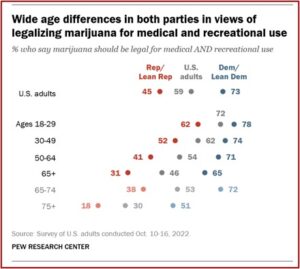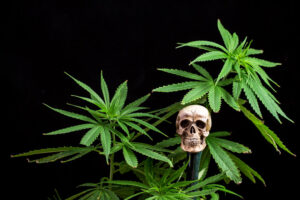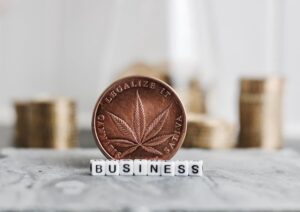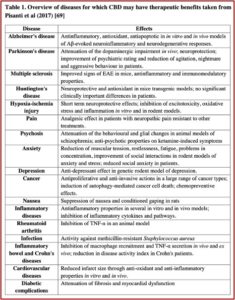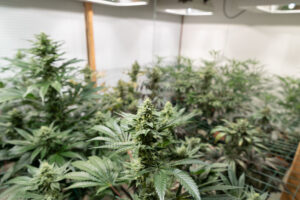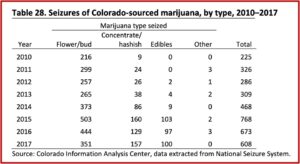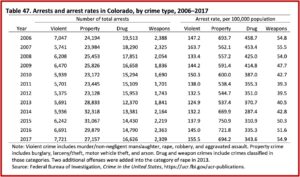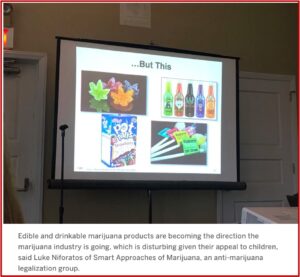
© Roi Brooks | 123rf.com
On September 25, 2019, Governor Tom Wolf announced he supports legalizing recreational marijuana. Wolf and Lt Gov. John Fetterman called for three specific actions at their press conference: 1) a bill to decriminalize non-violent and small cannabis-related offenses; 2) developing a way to expunge past convictions for non-violent and small cannabis-related offenses; and 3) consideration by the General Assembly of legalization of adult-use recreational marijuana. He said: “We now know the majority of Pennsylvanians are in favor of legalization, and that includes me.” He added that he looked forward to seeing what could be accomplished, especially the criminal justice reforms.
His endorsement represented an about-face from August of 2018, when he told KDKA Radio Morning News the time was not right to legalize marijuana for recreational use: “I don’t think the citizens of Pennsylvania are ready for it.” He recommended waiting on the longer-term results of legalization in states such as Colorado, Oregon, Washington, where their different approaches could be helpful as PA weighs its own options. Then in December of 2018, Wolf said in a tweet: “More and more states are successfully implementing marijuana legalization, and we need to keep learning from their efforts.” He added any change would require legislation. But he thought it was time for “Pennsylvania to take a serious and honest look at recreational marijuana.”
Wolf’s support for legalization came after the completion of Fetterman’s “Statewide Cannabis Listening Tour” on May 19, 2019. Key takeaways from those who attended the tour included: 65-70% approval for adult-use cannabis legalization; near unanimous support for decriminalization and mass expungement of non-violent and small cannabis-related offenses; if legalized, cannabis should be grown on Pennsylvania farms; the removal of cannabis from its current classification as a Schedule I drug; and a provision allowing for six to eight homegrown cannabis plants for personal use. More than 10,000 individuals attended Listening Tour meetings and the online portal received more then 44,000 comments. The September announcement of support for legalizing recreational marijuana was followed by the introduction of the “Adult-Use Cannabis Act,” Senate Bill 350, by Pennsylvania senators Daylin Leach and Sharif Street.
If passed, the bill would legalize adult-use cannabis for individuals 21 years of age and older, and establish a permitting process for growers, processors, and dispensaries; the current measure would not place a limit on the number of permits that could be issued. The bill would also allow for cannabis delivery, consumption (i.e., “bring your own” or BYO) lounges, and home grow. Under the proposed legislation, the Pennsylvania Department of Agriculture would oversee the adult-use program.
Two days after the Adult-Use Cannabis Act was introduced, Governor Wolf met with governors from New York, New Jersey and Connecticut at a “marijuana summit,” where they agreed to a set of core principles for legal cannabis programs they would pursue. This seems to be part of a continuing strategy for legalizing recreational marijuana in Pennsylvania that I said was like eating an elephant one bite at a time (See “Eating the Elephant of Marijuana Legalization in PA”). Let’s see if we can digest some of what we are hearing from the “Statewide Cannabis Listening Tour,” the Adult-Use Cannabis Act, and what we can learn from the states who have gone before PA in legalizing recreational marijuana.
The first key takeaway in the Executive Summary of the Listening Tour was that 65-70% of those who attended tour stops approved of adult-use cannabis legalization. This seems to be the source of Governor Wolf’s statement that “We now know the majority of Pennsylvanians are in favor of legalization.” We know that 65-70% of those who attended tour stops approved of adult-use cannabis legislation, not that 65-70% of Pennsylvanians approve of legalization. The 10,000 or so individuals who went to the Listening Tour stops are not representative of the Commonwealth as a whole, and surveys of them should not haven been presented as “the majority of Pennsylvanians” by the governor. The Executive Summary made the distinction, saying a majority of attendees supported legalization—why didn’t the governor?
The Adult-Use Cannabis Act would issue permits to applicants seeking to legally become a Grower, Homegrower, Microgrower, Processor, open a Dispensary to sell cannabis retail to consumers, become a Deliverer of cannabis from a dispensary to consumers, or operate “use lounges,” where individuals may use cannabis which they have brought to the space. Cannabis use in public, except use in these consumption lounges, would be prohibited. See the “Adult-Use Cannabis Act” link for a further description of these permits. There would be a 17.5 percent tax rate imposed at the point-of-sale on cannabis by dispensaries.
There was “near-unanimous” support for decriminalization and mass expungement of non-violent and small cannabis-related offenses, and for removing cannabis from its current classification as a Schedule I drug. These social justice concerns and the rescheduling of cannabis are laudable and can be legislated independent of legalizing adult-use of recreational marijuana. Were they bundled into the Adult-Use Cannabis Act in order to garner support in the General Assembly for legalizing recreational marijuana?
There was concern expressed for an anticipated increase of people driving under the influence of cannabis, which has in fact happened in other states. The National Institute on Drug Abuse said several meta-analyses found the risk of being involved in a crash increased significantly and in a few cases doubled or more than doubled. “Two large European studies found that drivers with THC in their blood were roughly twice as likely to be culpable for a fatal crash than drivers who had not used drugs or alcohol.”
A 2009 article in The American Journal on Addictions said detrimental effects of cannabis use varied in a dose-related fashion and were more pronounced with highly automatic driving functions than with more complex tasks that required conscious control. Impaired drivers tend to compensate effectively when driving, but combining alcohol and marijuana eliminates the ability to use such strategies “and results in impairment even at doses which would be insignificant were they of either drug alone.”
In Colorado, where recreational marijuana has been legal since 2012, there has been a sharp increase in the number of marijuana-related automobile fatalities each year from 2013 to 2016. There were 77 marijuana-related fatalities in 2016, 51 of those drivers had levels of THC above the threshold for cannabis impairment under Colorado law. According to a survey by the Colorado Department of Transportation, over half of marijuana users said they had got behind the wheel of a vehicle in the last 30 days within two hours of using the drug.
After recreational marijuana was legalized in Washington in 2012, the proportion of marijuana-positive drivers involved in fatal crashes increased from 8 percent to 17 percent in 2014, according to AAA. The majority of drivers who had detectable levels of THC also had alcohol and/or other drugs in their blood at the time of the crash. “Of all THC-positive drivers involved in fatal crashes over the study period, an estimated 34.0% were positive for THC only, 39.0% were positive for both THC and alcohol.” 16.5% were positive for both THC and one more other drug, but not alcohol; and 10.5% were positive for THC, alcohol, and one or more other drugs.
Research from the Insurance Institute for Highway Safety (IIHS) and Highway Loss Data Institute (HLDI) showed that crashes were up as much as 6 percent in Colorado, Nevada, Oregon and Washington when compared with neighboring states that haven’t legalized marijuana for recreational use: Idaho, Montana, Utah and Wyoming. IIHS-HLDI President David Harkey said legalizing marijuana was having a negative impact on the safety or our roads. “Despite the difficulty of isolating the specific effects of marijuana impairment on crash risk, the evidence is growing that legalizing its use increases crashes.”
The Adult-Use Cannabis Act seeks to take an illegal drug away from the black market and regulate its distribution through legislation and regulation. And hopefully develop a new revenue source for Pennsylvania. PA Auditor General Eugene DePasquale estimated legalizing marijuana would produce approximately $581 million in annual tax revenue. After funding a grant program ($2 million) and an interest-free loan program ($2 million) and $9 million to the Department of Agriculture to oversee the adult-use program, 95% of the remaining revenue would be distributed to school districts. Ironically, one of the top concerns noted in the “Statewide Cannabis Listening Tour” was the potential of negative effects on the development of youth and students.
The New York Times featured an article in April of 2019 on how the illegal marijuana market was booming in California despite legalization. The governor of California redeployed National Guard troops stationed on the border with Mexico to go after illegal cannabis farms in Northern California because the problem was getting worse, not better. In wildland areas, the California Department of Fish and Wildlife more than doubled its seizures of illicit marijuana in 2018, the first year recreational cannabis was legal.
Of the roughly 14 million pounds of marijuana grown in California annually, only a fraction — less than 20 percent according to state estimates and a private research firm — is consumed in California. The rest seeps out across the country illicitly, through the mail, express delivery services, private vehicles and small aircraft that ply trafficking routes that have existed for decades.This illicit trade has been strengthened by the increasing popularity of vaping, cannabis-infused candies, tinctures and other derivative products. Vape cartridges are much easier to carry and conceal than bags of raw cannabis. And the monetary incentives of trafficking also remain powerful: The price of cannabis products in places like Illinois, New York or Connecticut are typically many times higher than in California.
Politico also wrote about “How Legal Marijuana Is Helping the Black Market.” It said when Oregon legalized marijuana in 2014, the state tried to stifle its black market by making the path into the legal market was as easy as possible. “It did not limit licenses and it simplified regulations, creating a program with one of the lowest barriers to entry in the United States.” The strategy worked. An Oregon State Police Sergeant estimated there are more illicit marijuana growing in Southern Oregon than before legalization, with most of it going out of state. He said law enforcement is just inundated with illegal marijuana and exportation.
Now, Oregon is an easy place to find high-quality, cheap, legal marijuana. There are more than 650 licensed marijuana dispensaries in the state, or three times the number of McDonald’s restaurants (205). If you’re an Oregonian living in a town or county with legal pot and you want to buy marijuana, there is no reason to shop illegally.
Even The Motley Fool weighed in with “5 Reasons the Marijuana Black Market Won’t Go.” They noted how the legalization of recreational marijuana in Canada and U.S. states has not stopped black market cannabis, as initially expected. “In California, the largest legal weed market in the world by annual sales, illicit marijuana sales are projected to outpace legal pot sales in 2019 by a significant margin: $8.7 billion to $3.1 billion.” Estimates by Scotiabank are that the black market would be responsible for 71% of total cannabis sales in Canada in 2019. The problem noted by the Motley Fool included supply issues in Canada, tax issues in select US states, a slow dispensary approval process, jurisdiction issues, and spotty regulatory enforcement.
Staci Gruber, who is the director of the MIND (Marijuana Investigations for Neuroscientific Discovery) project, has published a series of studies that confirmed the heavy use of marijuana lowers the level of white matter in the corpus callosum region of the brain; and the earlier the age of marijuana use was associated with lower levels of white matter. White matter affects learning and brain functions, modulating the distribution of action potentials and acts as a relay and coordinates communication between different brain regions. Not surprisingly, marijuana smokers were also found to have higher levels of impulsivity. Adolescent marijuana users are also vulnerable to reduction in grey matter, which is responsible for information processing and decision making. See “Listening to Marijuana Research,” “Marijuana Policy Has Run Ahead of Science” and “Double Whammy of Teens Vaping Marijuana” for more on these concerns.
The Motley Fool noted where cannabis had been one of the fastest-growing industries on the planet. After sales more than tripled worldwide between 2014 and 2018, Wall Street forecasted a 5-fold to 18-fold increase in global annual revenue by 2030. But since May of 2019, many marijuana stocks have seen their share price cut in half or worse. Our neighbor to the north, Canada, hasn’t stomped out the black market as expected and supply shortages have been a persistent problem. And the regulatory enforcement designed to drive the black market out of business hasn’t been working. “Based on data from the United Cannabis Business Association, via an audit that was recently turned into California Gov. Gavin Newsom (D-Calif.), 2,835 of the 3,757 listings of marijuana sellers in California on website WeedMaps were unlicensed.”
Hopefully the core principles for legal cannabis programs the governors of Connecticut, New York, New Jersey and Pennsylvania agreed they would pursue at the so-called “marijuana summit” included a continued “wait and see” option. Legalizing recreational marijuana does not seem to have solved problems it was predicted to solve and seems to have generated new ones that weren’t anticipated or predicted. Let’s follow Governor Wolf’s older advice about waiting to see the longer-term consequences of marijuana legalization in Washington, Oregon, Colorado and California. If we acted on his endorsement in favor of legalization now, wouldn’t we be jumping from the frying pan into the fire?


